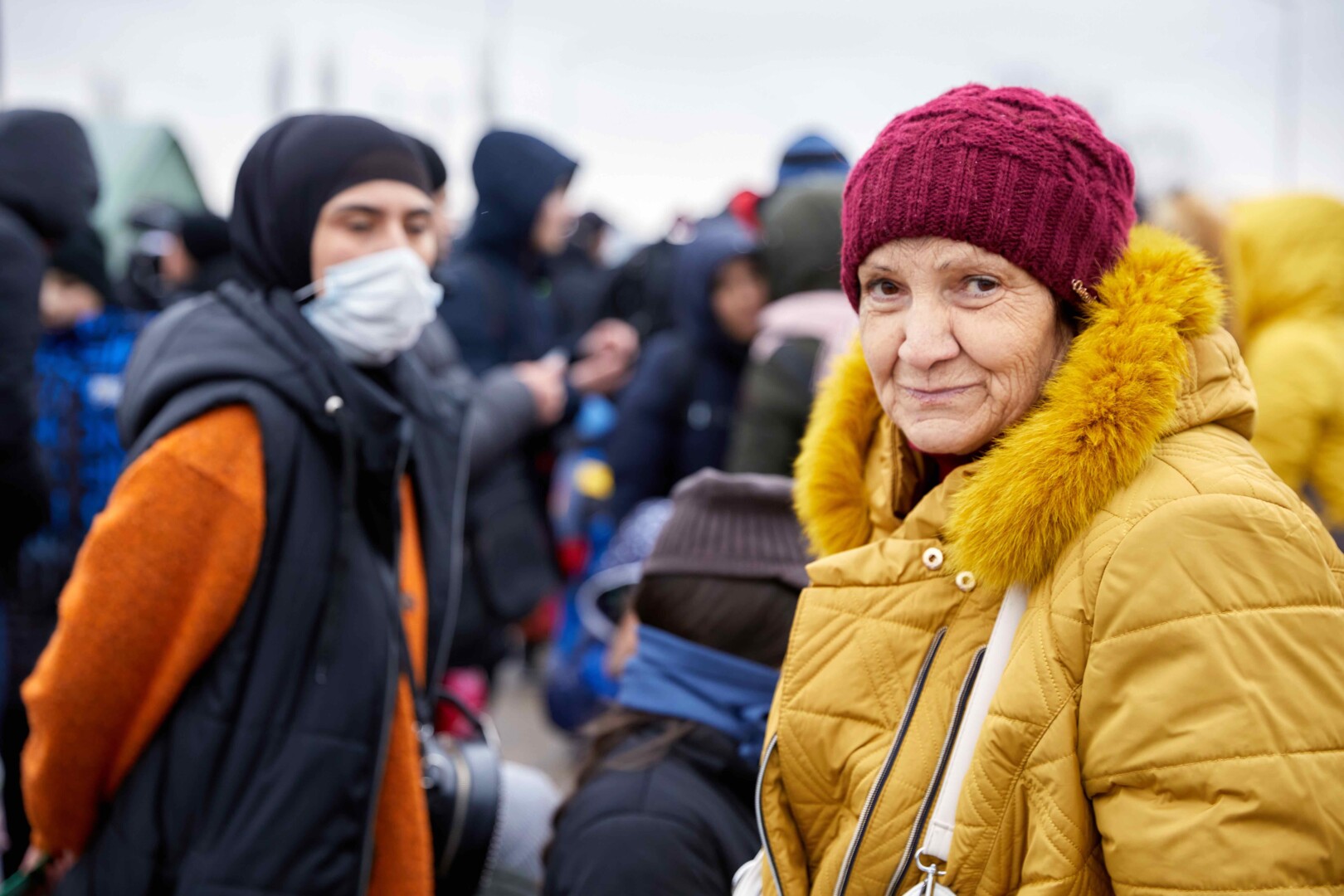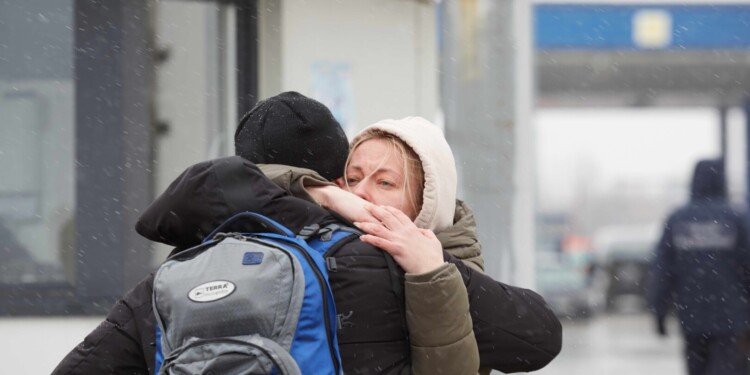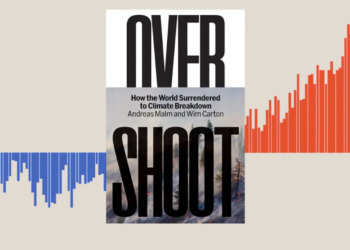During the past week, over a million people were forced to flee Ukraine as refugees following the military invasion of Russia. This is a sad reminder of other ongoing crises, longer-lasting, with much higher death tolls, that somehow have managed to be forgotten. This is the case of Yemen, a country that has faced over seven years of conflict, with 20 million Yemenis in need of humanitarian aid, according to UNHCR, the UN Refugee Agency.
The fastest-growing refugee crisis in Europe since World War II is happening now.
More than 2 million people have already fled war in Ukraine.
Please donate to help these refugees: https://t.co/ZvSmvCXUl7 pic.twitter.com/SyawslpQyg
— UNHCR, the UN Refugee Agency (@Refugees) March 9, 2022
After giving the example of two countries ravaged by war, one can rightfully ask, why does one crisis seem to attract more attention than the other?
This question goes beyond the daily coverage from the media, why do some crises elicit a stronger emotional response on a personal level? At the end of the day, the daily media coverage is a result of the events that get the most attention, more interactions on social media, higher ratings.
Research has given some insights that explain the causes of our unfortunate tendency to discriminate among crises, assigning more importance to some and less to others. For simplicity, I will refer to this phenomenon here as “crisis discrimination.” In this article, compassion is understood as the witnessing of a suffering other, and being prosocially motivated to alleviate that suffering.
Compassion discrimination or the tendency to discriminate among refugees on the basis of race and gender
As humans, we inherently hold a wide range of biases, many of them unconscious, which makes us have a stronger emotional response to certain crises. We will now explore the wide range of biases that unconsciously affect the way we perceive and react towards different humanitarian emergencies.
Research shows us that children elicit more compassionate responses than adults.
But how does our brain select which victims deserve our attention between mothers leaving strollers in Poland train stations for their Ukrainian peers, as opposed to two million Yemeni children left out of school?
Badr and his sister have lived all their life away from home– in Sa'ada.
After 7️⃣ years, the conflict in Yemen is older than them.
🔴In 2022, UNHCR has only received 9% of the needed fund to help displaced families across the country. pic.twitter.com/e3WYuLiVt2
— UNHCR Yemen (@UNHCRYemen) March 2, 2022
Research also suggests that “Solvability” is key in the crises we care about, because if there is no solution, then why should we care?
But what happens when the dimension of both crises seems too big for us to bear, when we are overwhelmed after going to bed in a pandemic and waking up in a war?
Probably the most relevant bias that would make a European care more about conflict in Ukraine as opposed to Yemen is called the “Similarity effect.”
Research shows us that compassion is associated with increased perceived self-other similarity, particularly to weak or vulnerable others. We tend to care more about victims that we can relate to. This goes beyond physical appearance and can be determined by other aspects such as shared history, having a similar culture, living near us, or having experienced something that hits closer to home.

But the similarity bias is not enough to determine which victim will grasp our utmost interest. In Colombia, especially in urban contexts, the conflict in Ukraine has eclipsed news about internal conflicts taking place in Arauca, where massive displacements have been caused after violent encounters between the national Military and the FARC dissent groups. Why would an international conflict resonate more in the country that is facing growing violence?
Geographic “proximity” is indeed a factor that can boost compassion, but it is weakened in the face of “Compassion Fatigue.” Compassion fatigue signifies “apathy or indifference towards the suffering of others” (disclosure: Being Colombian, I have been exposed to news about civil war, displacement, kidnapping, missing victims and violence for as long as I can remember. This overexposure to the media broadcasting suffering, often results in our system tuning out the compassionate responses).
Related Articles: Ukraine Refugees and the EU: As Numbers Rise, EU Faces Questions | Humanitarian Crisis in Yemen Has Millions ‘One Step Away’ From Famine
Another aspect that blurs our rationality and fosters compassion discrimination is the “Individuality effect.” Probably not the most appropriate individual to quote given the context, but Stalin expressed the most on point definition of this phenomenon: “One death is a tragedy, one million is a statistic.”
Marketing-wise, it is more powerful to talk about over two million Ukrainians fleeing the country than over four million internally displaced people in Yemen. Research studies show that as the victim size increases, helping intent and helping behaviour decreases.
A meta-analysis recently published on this subject including 41 studies affirmed that the majority of times donations are not positively related to the number of individuals in need. Instead, helping decreases as the number of victims increases.
One possible reason for this could be that donors believe that help is more tangible and efficient when there is one single victim as opposed to a group. One single victim can be described with more detailed information, as opposed to groups that can be described in more general and “blurred” representations.
In summary, for our imperfect brains, the bigger the number, the less we care.
Towards a more rationally based compassion
Rationally, Article 1 of the Universal Declaration of Human Rights seems obvious: “All human beings are born free and equal in dignity and rights.” If all lives are of equal value, why do our brains seem to give more importance to some victims as opposed to others? What kind of crises deserve our attention? Or better yet, what kind of crises get our attention? The obvious answer to both questions would be the same kind of crises — those that matter the most. This of course would be true if our criteria weren’t flawed, but as I have shown here, we are influenced, sometimes unconsciously, by different biases, that determine which victims elicit our compassion, and get our attention, and ultimately our action.
🔴🔴🔴🔴🔴🔴🔴🔴🔴🔴
🔴🔴🔴🔴🔴🔴🔴🔴🔴🔴
🔴🔴🔴🔴🔴🔴🔴🔴🔴🔴
🔴🔴🔴🔴🔴🔴🔴🔴🔴🔴
🔴🔴🔴🔴🔴🔴🔴🔴🔴🔴
🔴🔴🔴🔴🔴🔴🔴🔴🔴🔴
🔴🔴🔴🔴🔴🔴🔴🔴🔴🔴
🔴🔴🔴🔴🔴🔴🔴🔴🔴🔴
🔴🔴🔴🔴🔴🔴🔴🔴🔴🔴
🔴🔵🔵🔵🔵🔵🔵🔵🔵🔵In 2022, we only have 9% of needed funding to help people in #Yemen.
— UNHCR Yemen (@UNHCRYemen) March 14, 2022
As a fundraiser and researcher, I’ve specialized in the study of emotions as an elicitor of prosocial behaviour in the form of charitable giving. However, with this analysis it becomes clear to me that emotion cannot be the only filter to the decision-making process leading to caring, and ultimately acting on a particular crisis.
Now that our attention has been awakened due to the horrific reality of the compounding crises we are facing, let’s consciously question who we care about and why. Let’s use reason to make sure that our biases do not discriminate against any victims, even if they are distant, dissimilar, even if the number is too big to even grasp. “Emotion raising” is key to awakening prosocial behaviour, but it must be guided by reason for it to be just and long-lasting.
Editor’s Note: The opinions expressed here by Impakter.com columnists are their own, not those of Impakter.com — In the Featured Photo: A scene from the Palanca-Maiaki-Udobnoe border crossing point, between the Republic of Moldova and Ukraine on 1 March 2022. People flee the military offensive in Ukraine, seeking refuge in Moldova or transiting the country on their way to Romania and other EU countries. Featured Photo Credit: UN Women/Aurel Obreja.










